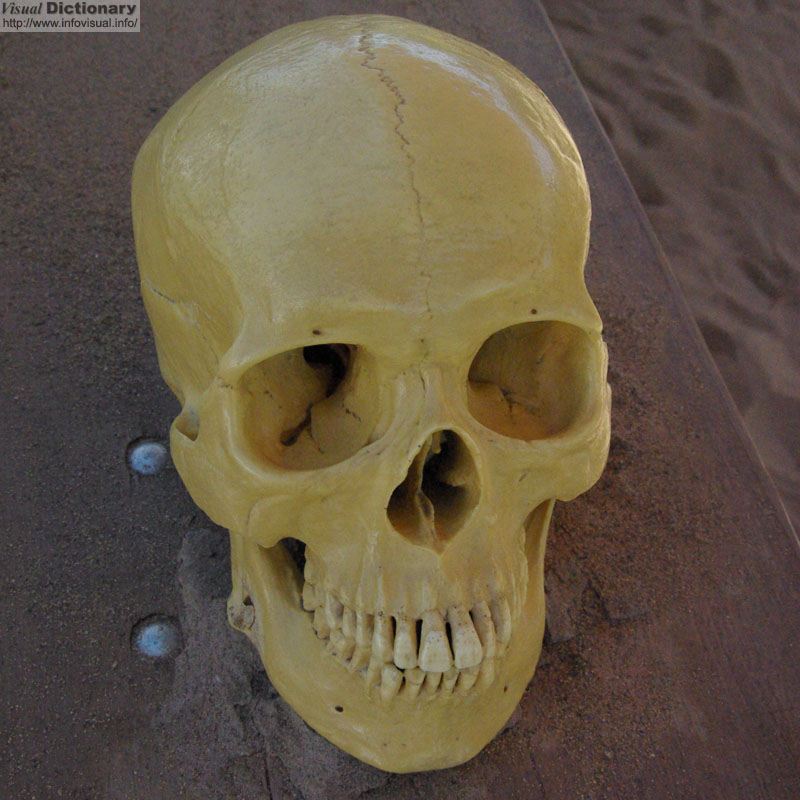Osteología del cráneo

Hueso frontal: Hueso que forma el frente.
Arco ciliar: Hueso que forma el arco, situé al nivel de las cejas.
Cavidad orbitar: Parte hueca del cráneo donde está el ojo.
Hueso nasal: Hueso que forma la nariz.
Fosa nasal: Cavidad osea relativa al nariz.
Maxilar superior: Parte osea superior de la mandibula.
Maxilar inferior: Parte osea inferior de la mandibula.
Hueso cigomático: Hueso que forma la mejilla.
Apófisis mastoidiana: Excrecencia osea a la base del cráneo.
Hueso occipital: Hueso que forma la parte posterior inferior del cráneo.
Hueso temporal: Hueso que forma el tempo.
Hueso esfénoides: Hueso situado a la base del cráneo.
Parietal: Hueso que forma las costillas y la parte superior de la caja cránea.
Foto :
EN : Human
skull
FR : Crâne
humain
ES : Cráneo
humano

The humain skull is a bony structure found in many animals which serves as the general framework for the head. The skull supports the structures of the face and protects the head against injury. The skull is made up of two bones: the cranium and the mandible. A skull that is missing a mandible is only a cranium, this is the source of a very commonly made error in terminology. Protection of the brain is only one part of the function of a bony humain skull. For example, a fixed distance between the eyes is essential for stereoscopic vision, and a fixed position for the ears helps the brain to use auditory cues to judge direction and distance of sounds.
Animation : Cráneo
Gracias a YouTube de permitirnos d'observar este vídeo.